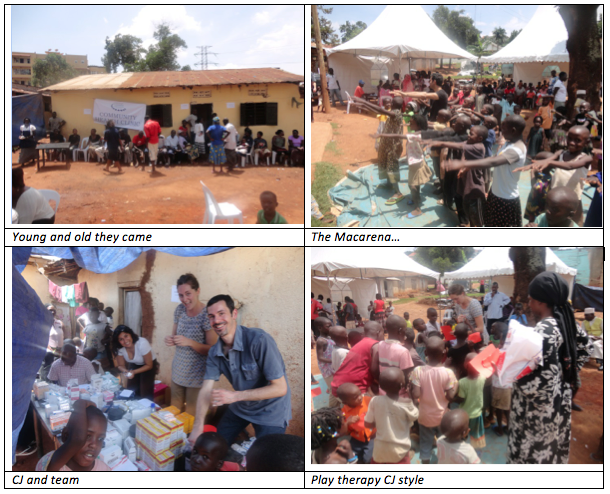The Merriam Webster dictionary defines community as “an interacting population of various kinds of individuals in a common location.”
I came to appreciate this more when my local placement organization moved offices in October 2012 and became a part of a small and beautiful community of upper Naguru in Kampala. The size of about 4 hectares, this community does nothing but induce a sense of humility in you. With 150 households at the very least, it is a mix of cultures and dialects – a mini UN. A highlight for many is the occasional sight of children, stark naked, receiving their daily dose of a beating or a bath from their mothers, the sight of middle aged men at the end of the day having a laid back evening, clearly under the influence of substances I am not sure I am allowed to write about, the lovely food from a rather dingy restaurant I have learned to call “mama baby’s” (must be only in Uganda where we make use of such analogies when the memory of a name eludes us) next door is devoured by all staff members regularly, and the cutest of children just happy to walk or run along with you, rain or shine, oblivious of whether you are having the worst of days or not…but what a therapy they unknowingly provide.
We also learn that the people do a good job of masking their problems… they, in months, will be evicted to make way for “development,” public health bottlenecks like the poor sewerage and drainage system, lack of pit latrines and running water in most households. The local community leader provides an anecdote on his recent discovery that he is Type-2 diabetic and is in constant search of medicinal herbs because he can’t afford the more expensive conventional medicines. The children of school going age clearly spend their days at home because mummy and/or daddy do not have the resources to keep them in school (so much for Universal Primary Education!). We were simply hit by the grim reality that behind the smiles and positive outlook, they have tough challenges that we inadvertently did not think of, or relate to as members of the community.
I think that there is no better way to embrace your community than to do anything that will positively contribute to their livelihood… whether it is singing for them or providing mosquito nets. Interestingly for our team as well, is that some of the public health challenges we are supporting the local ministry to address were right next door.
Armed with nothing but the will and conviction to provide a service to the community, we worked with the community leadership to host a small, outpatient based clinic. With a team of 12 volunteers, quick point of care diagnostics such as for malaria, procurement of the most commonly prescribed drugs done, and IMPORTANTLY certain of the blessing of our community and its leadership, we were all set. The clinic day turned out to be one of the most rewarding days for everyone. For a number, I think the reward of direct involvement in patient care was simply out of this world. At the end of a grueling 8 hours of non-stop action- triaging, dispensing, health talks et cetera: 484 patients seen, 100% of children in attendance de-wormed, 84 screened for HIV, 13 treated for lab tested malaria, and the acme for a number of us… a fun group dance, the Macarena to be specific, with the children.
Inevitably, a barrage of questions followed: why did we not do this earlier? Why can’t this be done often? When is the next clinic scheduled for? (This… only time will tell!) You simply can never do enough for your community, your home.

